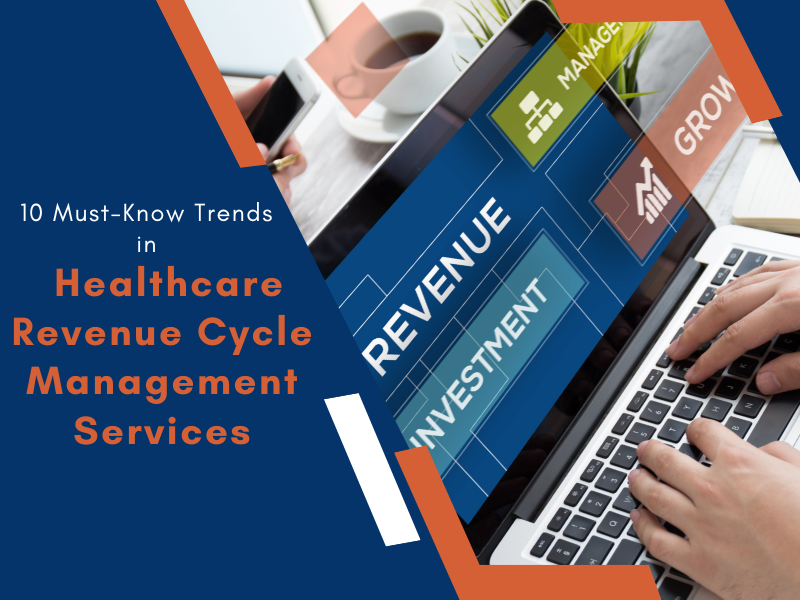In the world of revenue cycle management in healthcare, claim accuracy is essential for ensuring timely reimbursements and minimizing denials. Healthcare providers face increasing complexity in billing due to evolving regulations, diverse payer requirements, and coding standards. Amidst these challenges, claim scrubbers play a vital role in streamlining the revenue cycle. But what exactly are scrubbers, and why are they so crucial in healthcare revenue cycle management? Let’s explore.
Understanding Revenue Cycle Management in Healthcare
Revenue cycle management in healthcare encompasses all the processes involved in tracking patient care services from the initial appointment to the final payment. It includes patient registration, insurance verification, medical coding, claims submission, and collections. The goal is to ensure that healthcare providers get reimbursed efficiently and accurately for the services rendered.
However, errors in billing and claims submission often lead to denials, delaying payments and increasing administrative burdens. This is where claim scrubbers come into play.
What Are Claim Scrubbers?
Claim scrubbers are automated tools or software solutions designed to review and validate medical claims before submission to payers. These tools act as a quality check, ensuring that claims are accurate, complete, and compliant with payer-specific guidelines. By identifying and correcting errors before submission, scrubbers significantly reduce the risk of claim denials.
The Role of Scrubbers in Revenue Cycle Management in Healthcare
Scrubbers are integral to ensuring the efficiency and accuracy of the revenue cycle. Here’s how they contribute to revenue cycle management:
1. Error Detection and Correction
Claim scrubbers analyze claims for common errors, including incorrect patient information, missing codes, and mismatched data. They flag discrepancies and provide instructions to correct them, ensuring claims are accurate and ready for submission.
2. Compliance with Payer Guidelines
Each insurance payer has specific rules and regulations for claims submission. Claim scrubbers ensure that the submitted claims comply with these payer-specific requirements, reducing the likelihood of rejection due to non-compliance.
3. Enhancing First-Pass Acceptance Rates
The first-pass acceptance rate refers to the percentage of claims approved on the first submission. By pre-validating claims, scrubbers improve this rate, leading to quicker reimbursements and reducing the need for resubmissions.
4. Improving Efficiency
Manual claim review can be time-consuming and prone to human error. Scrubbers automate this process, saving time and allowing healthcare staff to focus on more critical tasks like patient care.
5. Reducing Administrative Costs
By minimizing claim denials and resubmissions, scrubbers lower administrative costs associated with claim processing. This not only benefits healthcare providers but also contributes to the overall efficiency of the revenue cycle.
Key Features of Claim Scrubbers
Effective claim scrubbers offer the following features:
- Real-Time Validation: They review claims instantly, providing feedback on errors and corrections.
- Customizable Rules Engine: Scrubbers can adapt to the unique requirements of different payers and specialties.
- Integration with Billing Systems: Most claim scrubbers integrate seamlessly with electronic health record (EHR) and practice management systems.
- Detailed Error Reports: They generate comprehensive reports highlighting errors, their causes, and corrective actions.
Common Errors Detected by Claim Scrubbers
Claim scrubbers identify and correct a wide range of errors, including:
- Incorrect Patient Information: Errors in demographics like name, date of birth, or insurance details.
- Invalid or Missing Codes: Inaccurate ICD-10, CPT, or HCPCS codes that lead to claim denials.
- Mismatched Information: Discrepancies between the claim and the payer’s requirements.
- Duplicate Claims: Flags duplicate submissions to avoid unnecessary denials.
- Incomplete Claims: Ensures all required fields are filled and meet the payer’s guidelines.
Benefits of Using Scrubbers in Revenue Cycle Management in Healthcare
The adoption of claim scrubbers in revenue cycle management in healthcare offers numerous advantages:
1. Faster Reimbursements
By ensuring error-free claims, scrubbers reduce processing time, enabling quicker payments from insurers.
2. Higher Revenue
Minimized claim denials and resubmissions result in increased revenue for healthcare providers.
3. Better Cash Flow
Efficient claims processing ensures a steady flow of income, enhancing the financial health of healthcare organizations.
4. Improved Accuracy
Scrubbers reduce human errors, improving the overall accuracy of the billing process.
5. Streamlined Operations
Automating claim validation reduces the administrative burden, allowing staff to focus on other critical tasks.
How Scrubbers Impact Healthcare Providers
For healthcare providers, scrubbers are more than just tools; they are essential components of a well-functioning revenue cycle management system. Providers benefit from:
- Reduced Claim Denials: Claims submitted with scrubber validation are more likely to be accepted.
- Enhanced Operational Efficiency: Automating claim review streamlines the billing process.
- Cost Savings: Lower administrative costs lead to overall savings.
- Improved Provider-Payer Relationships: Accurate claims submission fosters trust and better communication with payers.
Choosing the Right Scrubber for Your Practice
Selecting the right claim scrubber involves considering factors such as:
- Compatibility with Existing Systems: Ensure the scrubber integrates seamlessly with your current billing and EHR systems.
- Customizability: Look for a solution that adapts to your specialty and payer-specific requirements.
- Ease of Use: The scrubber should be user-friendly and provide actionable insights.
- Support and Updates: Choose a provider that offers regular updates and excellent customer support to keep up with industry changes.
The Future of Scrubbers in Revenue Cycle Management in Healthcare
As technology continues to evolve, the role of scrubbers will only expand. Integration with artificial intelligence (AI) and machine learning (ML) could make claim scrubbers even more powerful, enabling predictive analytics, real-time insights, and automated decision-making. These advancements will further optimize revenue cycle management in healthcare, reducing errors and improving financial outcomes for providers.
Apaana Healthcare: Your Trusted Partner in Revenue Cycle Management
At Apaana Healthcare, we understand the critical role claim scrubbers play in revenue cycle management in healthcare. Our team is dedicated to delivering comprehensive solutions that enhance operational efficiency and ensure accurate claims processing.
Apaana Healthcare specializes in outsourced services for health plans, including member enrollment, claims administration, medical billing & coding, and provider engagement. With our expertise and innovative tools, we help healthcare organizations reduce costs, minimize denials, and achieve seamless revenue cycle management.
Let us drive operational excellence for your healthcare practice. Partner with Apaana Healthcare today and experience the difference!





